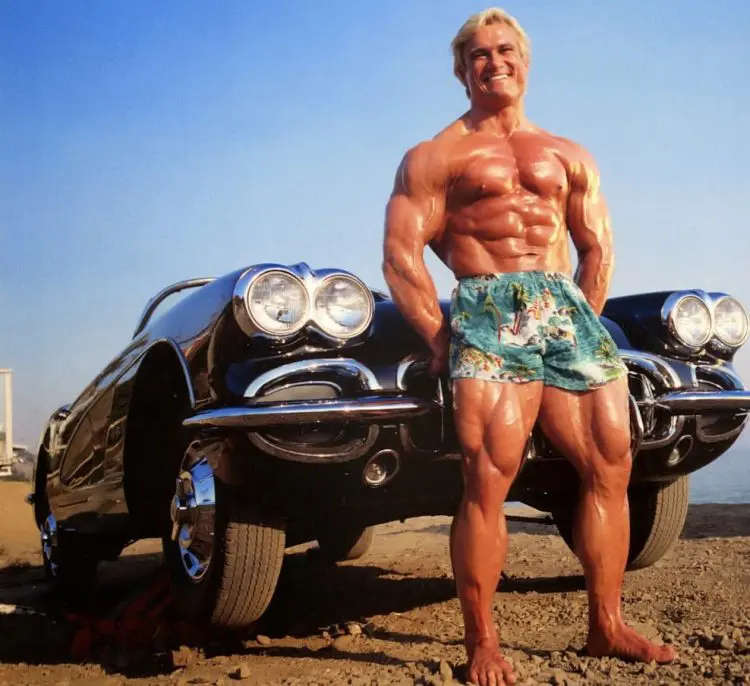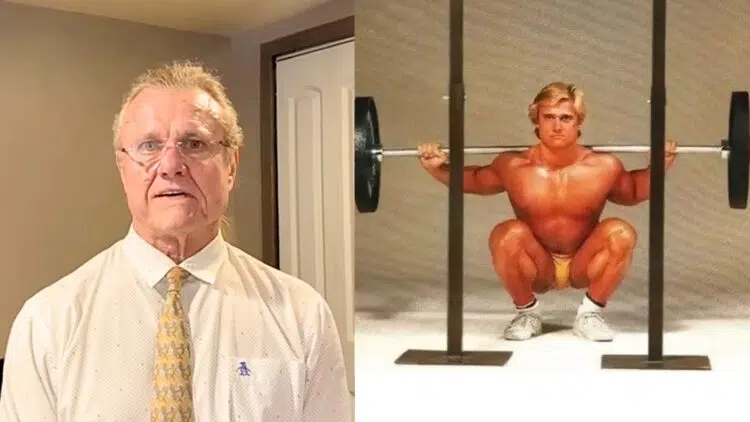A golden era phenom, Tom Platz remains one of the most talked about bodybuilders on the planet, even in retirement. In a recent Instagram post published on September 1, 2024, Platz discussed ‘compensatory acceleration’ while lifting weights, exploring the benefits of pushing slow versus fast for optimal results.
Tom Platz is known for his relentless work ethic and etched-to-the-bone quads. Nicknamed ‘The Quadfather,’ Platz proved to have one of the most impressive lower bodies of all time. But it wasn’t just for looks. Platz knew his way around the gym, especially when it came to squatting. At one point, Platz held a squat record in 1992 of 525 pounds for 23 reps until it was broken by former World’s Strongest Man Mitchell Hooper in 2023, who bested Platz by just one rep.
He was also made famous for his squat-off competitions in the prime of his career against Fred Hatfield, which took place in 1993. Ultimately, both men realized success, but Platz’s contributions to bodybuilding later led to him becoming an international star in fitness.
Tom Platz Breaks Down Benefits of Moving Weight Faster vs Slower

Stories of Tom Platz’s training intensity fuel his legacy today. Australian bodybuilding star Lee Priest has been candid about training with Platz. He said after joining him for leg day back in his prime, the workout was so intense that Priest mentioned he thought he was having a heart attack later that night. Although Platz hasn’t seen a bodybuilding stage in quite some time, his influence is undeniable and the younger generation of athletes have taken notice of his accolades as well.
Surging bodybuilding influencer Sam Sulek would love nothing more than to train alongside Platz. With how detail-oriented Platz’s training methods were, learning how he processed such feats could help anyone eager to level up their lifts, especially if they are aiming at improving their squat strength.
Platz recently divulged his method to avoid back injuries while squatting using compensatory acceleration.
Level Up Your Fitness: Join our 💪 strong community in Fitness Volt Newsletter. Get daily inspiration, expert-backed workouts, nutrition tips, the latest in strength sports, and the support you need to reach your goals. Subscribe for free!
“When you push your weight faster when you achieve acceleration, the bar goes fast, you don’t go real fast and hurt your back at the top on squats, but it’s called compensatory acceleration, where lightweight motor pathway in your nervous system wise, your brain feels like, and your body feels like it’s heavier weight, the faster you can push it.”
He says compensatory acceleration also causes the mind and body to feel like weights are heavier than they are, allowing for the use of lighter loads which can reduce the risk of injury.
“So 500 pounds pushing fast is like 1,000 pounds pushing it slow. So you don’t have to use the heavy weights, you can use lighter weights and take less risk. This is another thing people don’t talk about anymore. This is what I learned” Platz explained.
While Tom Platz is known as ‘The Quadfather,’ he recently revealed that he didn’t start off that way. Platz shared that when he was younger he actually had a weaker lower body, which required him to focus on eating a carbohydrate and protein-rich diet. However, for the most part, Platz’s diet consisted of the same foods everyone else ate growing up.
“Whatever they served for lunch in high school I ate. When I went home I had whatever my mother made for dinner. It was usually pork chops or some kind of ground beef, what’s it called, I have ground beef and sort of like a cake and it rises. My mother used to make that. Yeah meatloaf” Platz shared.
Not everyone can look like a legendary bodybuilder, but remember, they had to start somewhere. Tom Platz was just your average kid in the school cafeteria before he became known for his incredible quads. With just a little mindfulness and a whole lot of determination, you never know if you’ll be the next bodybuilder to go down in history.
RELATED: Tom Platz Critical of How People Exercise Today: “How Do You Not Train To Failure?”









